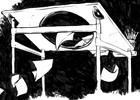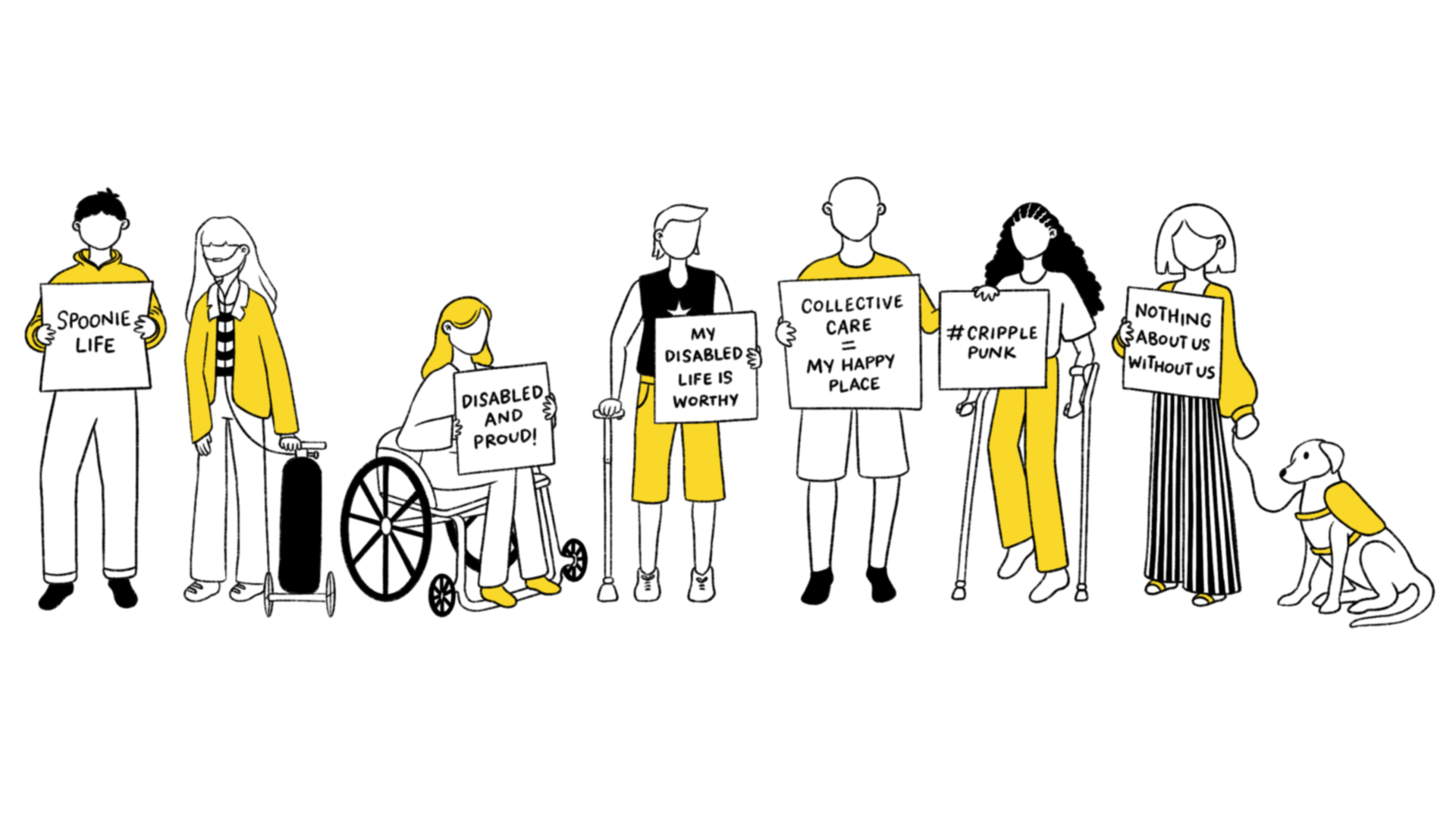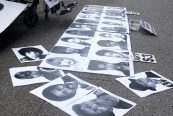
Illustration by Aurelie Beatley
SAIC’s new President shares his thoughts on the city, the school and his new responsibilities.
If you haven’t already heard, SAIC has a new President. Architect, artist and educator Wellington “Duke” Reiter plans to be in Chicago by August 25 to start his new role at SAIC at the beginning of the school year. Formerly the Dean of the College of Design at Arizona State University (ASU), Reiter is replacing Tony Jones. Jones will commence his one-year tenure as SAIC’s first Chancellor, as Reiter steps into his shoes.
Reiter has formerly worked in the Department of Architecture at MIT and began his teaching career at Rhode Island College of Design. He has won numerous awards for architecture and design, including several American Institute of Architects (AIA) Honor Awards for urban design, the MIT Kepes Prize for interdisciplinary design, and recently became a Fellow of the AIA. Reiter received his university education at Tulane University’s School of Architecture, New Orleans, North London Polytechnic, and Harvard’s Graduate School of Design.
F Newsmagazine interviewed Reiter in July, soon after he had returned from a seminar at Harvard University for new presidents. According to the letter Reiter wrote to the staff and faculty at SAIC, “president school” left all of its pupils “thoroughly convinced that no one is adequately equipped to assume the role of president…or ever will be.”
Jesse Stein: Can you tell us a little about your background?
Wellington Reiter: I was born in Akron, Ohio. I wanted to go to college in an environment that was as different from the Midwest as possible and yet still be in this country. New Orleans is indeed a place apart, as was so disturbingly shown to us in 2005. I love that city and loved my time there. My experience also includes twenty years in Boston and five in Phoenix. One could consider my coming to Chicago as a return to my roots in the post-industrial heartland.
JS: How did you get the nickname Duke?
WR: “Tim” would have been so much easier and is in fact my nome de Starbucks. Duke is not a middle name. My father was in the military and a history buff. Still is. As a result, the Duke of Wellington was an attractive figure for reasons unknown. Thus, the nickname “Duke” was substituted for the much more cumbersome “Wellington.” I think my parents probably instituted this adjustment on about day two of my existence.
JS: What attracted you to the role of President at SAIC?
WR: I was not looking to leave my present position at Arizona State University (ASU) or looking for a presidential position. However, several institutions that feature art and design programs came calling this year. Given my background, which includes experience in both art and design, as well as my experience in academic administration, I was apparently identified as appropriate for a presidential position.
Of the opportunities available, the SAIC invitation was the most attractive, due to the remarkable legacy of the Art Institute of Chicago as a whole (school and museum), the first-rate programs already in place, the role of the city as context, and the optimism of the people I encountered at SAIC during the search process.
I am very especially interested in leveraging one of the distinguishing features of SAIC: that is, its vital urban context. The future of the world is going to be about the idea and reality of the city, and I believe that art and design have a profound role to play in our understanding of this phenomenon and that it can contribute, to, creatingultimately creating places that are accommodating, stimulating, and sustainable.
JS: What do you think about Chicago as a city, and where in Chicago will you and your family reside?
WR: The city itself is one of the great attractions of the job. The awareness of design and public art on the part of the general public is unparalleled in the United States. I just gave a talk to an audience in Phoenix about the prescient aspects of Daniel Burnham’s Plan of Chicago, which is having its centennial in 2009. Clearly this very self-conscious planning process has served Chicago well. In fact, Millennium Park could be seen as the culmination an extension of this 100-year development process. The Olympics—which I intend to help secure if at all possible—will be yet another extension of that forward-thinking process.
One of the great advantages of Chicago—and what makes it a great city—is the opportunity to live in a dense urban environment. My wife and I will be living in a high rise within walking distance of SAIC. I was accustomed to walking and public transportation from my time in Boston but in Phoenix, every action requires a car. Presently we are a two-Prius family, but will bring only one car to Chicago, for weekend use.
JS: Initially, what will your priorities be as the new President of SAIC?
WR: It would be unwise and untrue to suggest that I am coming to SAIC with a preconceived plan and unwise to suggest that this would be a good strategy. I of course have ideas but the fact is that . I have so much to learn about the various programs, the students, the faculty, the staff, and the physical plant. I am very much looking forward to the pending process of discovery. , and I am anxious to hear about the aspirations for the School. I intend to do everything I can to bring the resources, infrastructure, and entrepreneurial spirit required to achieve them.
JS: What are the main ways that you think this position will differ to your role as the Dean of the College of Design at ASU?
WR: The College of Design supports many of the same disciplines to be found at SAIC, and is approximately the same size (as SAIC). That said, a deanship is much closer to the daily academic interests of the institution than the role of president. While I am very interested in these areas of study and research, I am going to have to work to maintain my focus on the issues to which only a president can attend—the long-term advancement of the institution and success capacity-building of SAIC. I see my job to be about bringing external interests of all kinds to bear on the School to ensure that it is well supported and engaged in the critical issues of our time.
JS: ASU and SAIC are two very different institutions, what are your thoughts on the transition to a college that is a) private and b) specifically an art school?
WR: I think it is arguable that ASU is currently conducting one of the great most experimentsnoble experiments in higher education—one that SAIC could learn from. Even though it is one of the largest state universities in the country at 65,000 students, it is behaving as a very nimble and entrepreneurial place where the conventional notions of disciplinary boundaries, student success, and faculty research, are being completely reinvented. The sense of urgency on its campus around the idea of sustainability in all of its manifestations—including cultural sustainability—is palpable. I intend to bring this same sense of possibility to SAIC.
The lesson here, for me, is that the differences are not necessarily as distinct as one might think and should change the idea of who the “peers” of SAIC will be in the future. I do not think that they are limited to other independent schools of art and design.
ASU has, for example, a combination program called Arts, Media, and Engineering—one that is conflating art ambitions with the considerably larger resources typical of scientific research. There is a lesson here with regard to the value of partnerships and the work that can emerge from hybrid studies. It also brings an elevated notion of research into the art studio.
JS: You were very much involved in building projects for ASU—could you elaborate on that experience? With that in view, what are your thoughts on the large-scale building projects that SAIC currently has in motion? How involved would you like to be in the design and planning for these transformations?
WR: One of my major responsibilities at ASU, in addition to my deanship, was to conceptualize a new campus for the university in downtown Phoenix that would support 15,000 students. I was given this task in collaboration with other colleagues at ASU in 2004, at which time the notion of such a campus was non-existent. This fall at ASU, 7500 students will be taking courses in new and renovated buildings, and a public park is in construction, which will feature the largest piece of public art in the region.
Do I harbor plans for large, flexible, attractive, state of the art facilities for SAIC? Absolutely. When, where, and how remains to be determined, but there is no doubt that the School needs to be taking action shortly in this regard to maintain its current position as a leader in the arts. My job is not to design them but to enable their possibility.
JS: Tony Jones is staying on at SAIC for another year, as Chancellor. How do you think your role as President will differ from his position as Chancellor?
WR: Tony and I just met last week (in July) and enjoyed two lively dinner conversations. It is clear that he has set SAIC up for future success and continues to think about how to advance the School. SAIC has been fortunate to have such dedication. As a further demonstration of that commitment, I believe he is writing a history of the School, which should prove to be invaluable. We are working out a mutually beneficial working relationship but there is no doubt that the responsibilities and decision-making for the School reside with the President’s office.
JS: How involved will you be in fundraising for SAIC?
WR: Bottom line: my number one job. But I will only be successful if I can articulate a vision and mission that is authentic and derived from faculty interests and expertise. Fundraising is not an autonomous activity. The acquisition of new resources from others will be tied not to our need for money, but to the quality of the ideas we present and the belief that extraordinary work will emerge from those investments. This is a very proactive notion of fundraising and not one based on technical procedures. Thus the attraction of investments is a shared responsibility for the entire SAIC community, which I am only too happy to advance.
JS: It is particularly interesting that SAIC has appointed a president from the field of architecture/public art/urban design at this particular moment. With the recently-established programs in the Department of Architecture, Interior Architecture and Designed Objects (AIADO), and the new studio/floorspace for this department, it seems that the School’s orientation is shifting from a more traditional art school, towards a design- and architecture-oriented institution. What do you feel about this?
WR: One should be very careful not to see the appointment of a trained architect as a nod in that direction or the potential diminishment of the arts at SAIC. The potential for such a perception is there but it would not be related to my thinking on the matter.
Two thoughts:
Art and design programs have been installed under one roof, so to speak, at many institutions around the country. I have visited many of them. My question is always the same: how does the adjacency of art to design, or vice versa, cause both to be further enriched? What is being exchanged? Is this a strategic partnership, an outdated notion about creativity, or an economic convenience that has thrown these two disciplines together? I think about this constantly and want SAIC to be the institution that demonstrates the potential of this relationship in ways that I have yet to witness.
This is not to suggest that art and design are not without distinct motivations, critical capacities, audiences, and opportunities. They are indeed very different animals. What they share has less to do with media or studio-based training than with the responsibility to offer alternative visions of our current state of affairs. It should not take much effort on the part ofprompting for artists and designers to want to make a difference in the world given the multitude of pending crises. This is an extraordinary time to be in our fields and I believe that we should be engaged with matters that would benefit from our unique perspectives.
JS: How might this (potential emphasis) impact upon other SAIC departments that are not architecture or design oriented?
WR: I don’t think that the real “division” in the School is between art and design. Instead, one might argue that it is between those disciplines within in which the author can create a work directly and immediately (painting, for example) and the others that require a collaborative team and very necessarily indirect relationship to the process of creation (architecture, for example). These are radically different enterprises and even work styles.even lifestyles.
That said, I would note that pPractices in sculpture andor public art are changing our ideas of not only the work, but the process by which it is brought into being. There are business principles lurking in and around these projects that I would like to see made more overt and thus available to the scrutiny and manipulation by artists and designers to greater advantage.
JS: Do you think this increased interest in architecture, design and urban issues follows a broader pattern in United States public discussion/debate? Could it be just the flavor of the month, or a more significant intellectual shift?
WR: Both. But I would reiterate the implications of what clearly is emerging as an urban world. We have shifted from rural economies to ones that are significantly more complex, networked, and fraught with environmental and social difficulties. The city-state will be the dominant feature of our existence. Therefore architecture, landscape, and urban design are necessarily a part of this discussion
JS: What are your thoughts on the fact that AIADO does not (yet) offer accredited degrees in architecture and designed objects?
WR: I have been on all sides of the accreditation issue. In practice, I think it is an over-rated concern. However, accreditation exists for a reason. Therefore, any program worth establishing should meet the minimum requirements as a matter of course and-, even better, be so innovative and effective so as to change the criteria by which the system is evaluated. That is my hope for SAIC on all fronts.
JS: Can you tell us a little about your current research interests?
WR: Somewhat to my surprise, my focus as a designer is rarely about objects or projects but has become trained on schools and their structure. Given my past and current position, I do not think that there is any way that one cannot train a predilection forI have redirected my interest in impact, innovation, and invention, and effectiveness towards the issue of education and the schools that present effective platforms for success. a school itself. The idea, processes, and responsibilities of education are a project worthy of study by creative persons of all stripes.
But more to the point of your question:
1. I will always be interested maintain an interest in the idea, definition, process, artifacts, and tools of drawing.
2. I am very much motivated by the questions of urbanism-, particularly airports.
3. Lastly, I am convinced that Building Information Modeling (BIM) and integrated practice will utterly transform the practice of architecture. No school should be failing to realize the implications for graduates in this discipline which are profound.
JS: One issue that seems to be up for discussion lately in the F Newsmagazine office is how the impending economic downturn may impact SAIC and the broader art community as a whole. Do you have any thoughts on this? Students were voicing concerns that this would mean increasing tuition fees (more than the usual increase) and fewer employment options when they leave the School.
WR: One has to acknowledge that we are in the midst of some economic turbulence and that this situation has the potential to be more dire and lengthy. I would be delighted to be wrong on that score. Interestingly enough, the discussions in Phoenix where I am now and those in the Midwest are nearly identical. The focus of discussion is on how to respond to a completely changed global economic landscape, one which will more than likely reduce the security and quality of life for many Americans.
As the leader of a school that is sending graduates out into this highly competitive marketplace, I think this situation can be used to our advantage. In the future, an emphasis will be placed on creativity, entrepreneurship, analysis, and communication skills. I come to SAIC believing that we possesses the potential to be a leader in these areas both through our existing disciplines and even more so in partnership with others. The times require that educators be extremely attentive to these issues and I welcome the challenge. I think it will take us to new and interesting places.
This is the extended version of F Newsmagazine’s interview with Duke Reiter. An abridged version appears in the September 2008 print issue of F Newsmagazine. Duke Reiter was interviewed in August 2008.





















